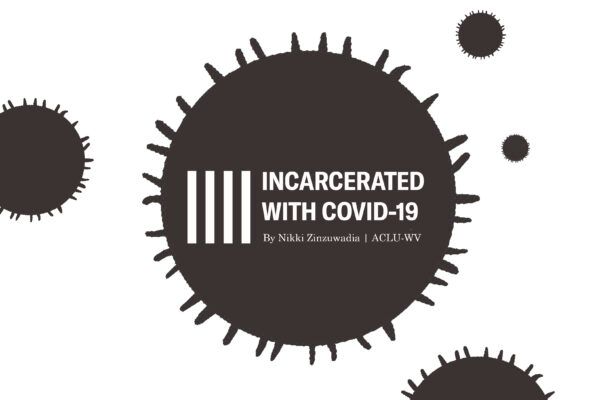The devastation of the COVID-19 pandemic continues to fall harder on Black people in the United States. They have died from COVID-19 at a rate of nearly 62 per 100,000 Americans. This mortality rate is 2.2 times the rate for Latinos and 2.3 times the rate for Asians and whites.
By June 9, at least 25,028 Black lives in the country succumbed to the deadly virus.
The first COVID-19 death in West Virginia was Viola York Horton, an 88-year-old Black woman in Marion County. Her death resulted from an outbreak in a local Black church community, where 30 percent of members tested positive after attending a service on March 15. By then, the state had not yet issued a stay-at-home order or reported a single COVID-19 case.
With scarce testing and medical resources in the early weeks of the pandemic, the crisis revealed the devastating effects of COVID-19 on Black lives. By June 9, 51 residents in Marion County, WV had tested positive for COVID-19, and 45.3 percent of them were Black. Black people make up only 3.55 percent of Marion County’s total population.
Black people are more likely to suffer from pre-existing health conditions, such as diabetes, hypertension, asthma, and heart disease, that increase the mortality and morbidity of COVID-19. At the same time, these disparities are exacerbated by economic inequalities, less access to health care, distrust of the medical establishment, crowded housing conditions, and other structural disadvantages faced by the Black community.
Given this high-risk population and how quickly COVID-19 can spread behind bars, Black prisoners are particularly vulnerable to the deadly virus. By May 13, they accounted for 58 percent of positive tests in Missouri’s corrections system, while comprising about one-third of the state’s prison population. As of May 20, Black prisoners in Vermont made up about 18 percent of positive inmate tests, despite representing only nine percent of the state’s prison population.
By May 14, Black inmates encompassed 60 percent of COVID-19 deaths in New York’s prison system, even though they were around 50 percent of the state’s incarcerated population. Prison outbreaks in Louisiana, where 66 percent of prisoners are Black, have seen more than 400 confirmed cases of COVID-19.
In sum, the COVID-19 pandemic is exposing the rampant inequities within society’s institutions, such as U.S. correctional facilities. Its disproportionate impact on the Black community underscores the existing racial disparities within American criminal law and American health care. Moreover, COVID-19 is highlighting the extent to which these systems are infected by, and driven by, deep systemic racism.
According to the Prison Policy Initiative, the United States incarcerates at a rate of 698 per 100,000 residents, which is more than any other country. Black people make up 40 percent of the incarcerated population, while representing only 13 percent of U.S. residents. The Black female incarceration rate has declined 55% since 2000, but it is still twice that of white women.
Black people have also been overrepresented in West Virginia’s corrections system. The West Virginia Center on Budget & Policy found that, in 2016, they were imprisoned at a rate that was 3.5 times the incarceration rate of white people. While Black people were approximately 3.5 percent of the state’s total population, they made up about 11.7 percent of West Virginia’s prison population.
Now, the Black community accounts for 4.2 percent of West Virginia’s total population and 7.3 percent of the state’s positive COVID-19 cases. Approximately 80 percent of Black people who have tested positive for COVID-19 in West Virginia are symptomatic, compared to 68 percent of white people who are confirmed cases. Additionally, the state’s Department of Health and Human Resources (DHHR) found that 30.4 percent of Black people who have tested positive are being hospitalized with COVID-19 compared to 15.2 percent of whites.
In response to the COVID-19 outbreak in Marion County’s Black community, West Virginia launched a statewide plan to increase community outreach and education for minority groups. It was meant to ensure that accurate race data is reported on COVID-19 cases and deaths. Additionally, the task force would increase free, optional COVID-19 testing for vulnerable communities in medically underserved counties.
While testing opportunities for minorities have increased in several counties in recent weeks, there was a delayed public release of race data. On May 6, West Virginia NAACP President Owens Browns filed a Freedom of Information Act request with the state’s DHHR, specifically calling for more comprehensive data on Black people impacted by COVID-19.
According to The Marshall Project, an overwhelming majority of states, including West Virginia, have failed to provide complete race data on prisoners affected by the COVID-19 crisis. It is unclear whether these prison systems are not tracking this information or refusing to make it publicly accessible. Collecting this information is crucial to not only understanding the effects of COVID-19 on different groups, but also implementing public health interventions for at-risk populations in incarcerated settings.
West Virginia’s efforts to test all of its correctional facilities by June 12 and implement statewide initiatives for underrepresented communities are positive steps. However, significantly more work needs to be done to address the racial disparities within our criminal law and health care systems that continue to affect West Virginia’s Black population.
Additionally, although the full impact of the COVID-19 pandemic on Black prisoners is especially unknown, it is clear they carry a significant risk of contracting COVID-19 and dying from the virus. As America’s jails and prisons can be serious drivers of COVID-19, we must be proactive in our efforts to protect the most vulnerable.

